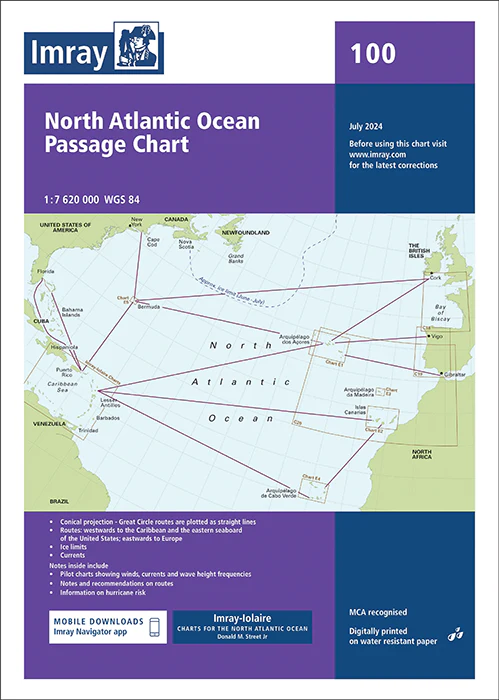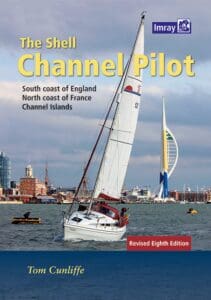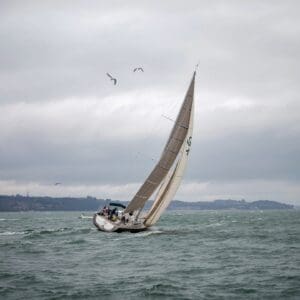Passage planning is a critical component of any Atlantic crossing. Whether you’re an experienced sailor or preparing for your first long-distance journey, meticulous passage planning ensures a safer, more efficient, and enjoyable experience. In this guide, we’ll cover the essential tips for passage planning when crossing the Atlantic, helping you navigate with confidence.
1. Choose the Best Time for Your Passage
When it comes to Atlantic passage planning, timing is everything. The ideal window for your journey depends on whether you’re heading east or west.
- East to West (Europe to the Caribbean or Americas): Most sailors embark on this route between November and January to take advantage of favorable trade winds and avoid the hurricane season, which officially ends on November 30.
- West to East (Americas to Europe): The best time for this passage is May to July, when the weather is more stable, and you can catch the prevailing westerlies for a smoother crossing.
2. Selecting Your Passage Route
Route selection is a vital part of passage planning. There are several well-traveled routes for crossing the Atlantic, each with its pros and cons. Choosing the right one can significantly impact the success of your journey:
- Southern Route (Canary Islands to the Caribbean): A popular option for east-to-west crossings, this route uses the trade winds to push vessels toward the Caribbean.
- Northern Route (Bermuda to the Azores): Ideal for west-to-east crossings, this route offers opportunities to rest and refuel at islands like Bermuda and the Azores.
- Mid-Atlantic Route: A direct route across the Atlantic, often taken by those heading between Europe and the U.S. or Canada. This option may present tougher weather conditions.
3. Weather and Ocean Currents
Weather forecasting and understanding ocean currents are critical to successful passage planning across the Atlantic. Be sure to monitor marine weather closely and familiarize yourself with key patterns:
- Trade Winds: When planning an east-to-west passage, the trade winds are your ally. These steady winds from the northeast push sailors toward the Caribbean.
- Westerlies: For west-to-east crossings, take advantage of the westerly winds across the North Atlantic during the summer months.
- Avoiding Hurricanes: During your passage planning, avoid the Atlantic hurricane season from June 1 to November 30 to ensure a safer journey.
4. Provisioning for Your Atlantic Crossing
Provisioning is an integral part of passage planning, as the right supplies can make all the difference on a long journey:
- Water: Plan for at least 2-3 liters of water per person per day, plus extra for emergencies. Consider investing in a watermaker for additional peace of mind.
- Food: Stock up on easy-to-cook, non-perishable foods, along with fresh produce and snacks for energy. Careful planning ensures you won’t run short of essentials.
- Spare Parts: Include essential spare parts for the boat, such as engine filters, belts, sails, and rigging materials. You’ll need tools for on-the-go repairs as part of your preparation.
5. Safety Measures in Passage Planning
Safety is a top priority when it comes to passage planning across the Atlantic. Here’s what to focus on:
- Vessel Preparation: Inspect your boat before departure. Ensure the rigging, engine, hull, and electronics are in top shape. Having a professional survey the boat is a wise investment.
- Safety Equipment: A serviced life raft, EPIRB (Emergency Position-Indicating Radio Beacon), and personal locator beacons (PLBs) are critical safety devices for an Atlantic crossing. Make sure everyone onboard knows how to use them.
- Crew Training: Conduct man-overboard drills and review safety protocols with the crew. It’s vital that every member knows what to do in an emergency.
6. Navigation and Communication Tools
Efficient passage planning includes investing in reliable navigation and communication systems to keep you on track and connected:
- Electronic and Paper Charts: Always update your electronic chart plotters before departure, but don’t forget to carry paper charts as a backup.
- Sat Phones and SSB Radios: Satellite phones and SSB (Single Side Band) radios are crucial for long-distance communication, especially for weather updates and emergency contact.
- AIS and Radar: Equip your boat with AIS (Automatic Identification System) to track other vessels, and use radar to detect weather fronts and navigate in poor visibility.
7. Establishing a Watchkeeping Routine
A solid watchkeeping schedule is essential for a successful Atlantic passage. As part of your passage planning, ensure there is a clear rotation so that someone is always on watch. Typical shifts are 3-4 hours, but this can vary based on crew size and experience. Having a well-rested crew ensures the vessel is always in good hands.
8. Planning for Downtime
During long ocean crossings, boredom can set in. As part of your passage planning, ensure you have ways to keep the crew entertained:
- Books, Games, and Music: Stock up on entertainment, from reading materials to music playlists.
- Maintenance Tasks: Breaking up the day with routine boat checks and small repairs will keep the crew engaged and the boat in top condition.
9. First Aid and Health Preparation
Medical preparedness is a key aspect of passage planning. Ensure your first aid kit is fully stocked, and the crew has any necessary medications. Having someone onboard with basic first aid or telemedicine access can be crucial in case of illness or injury.
10. Mental Preparedness
Crossing the Atlantic is as much a mental challenge as a physical one. A well-rounded passage planning strategy includes preparation for the psychological demands of such a long voyage. Keeping the crew engaged, rested, and in high spirits is crucial for maintaining morale.
Conclusion
Effective passage planning is the foundation of a safe and successful Atlantic crossing. From choosing the right time of year and provisioning carefully to navigating weather patterns and ensuring safety equipment is in order, every detail matters. By following these essential tips for passage planning, you’ll set yourself and your crew up for an unforgettable and secure ocean adventure.
With proper planning, your Atlantic passage can be the trip of a lifetime. Safe travels, and may the winds be in your favor!

The essential passage planning aid for Atlantic crossings, Imray Iolaire Chart 100 covers the North Atlantic from Brazil to Newfoundland and Gibraltar to the Caribbean. It has been constructed on a conical projection that means that Great Circle tracks can be plotted as straight lines rather than curves.

